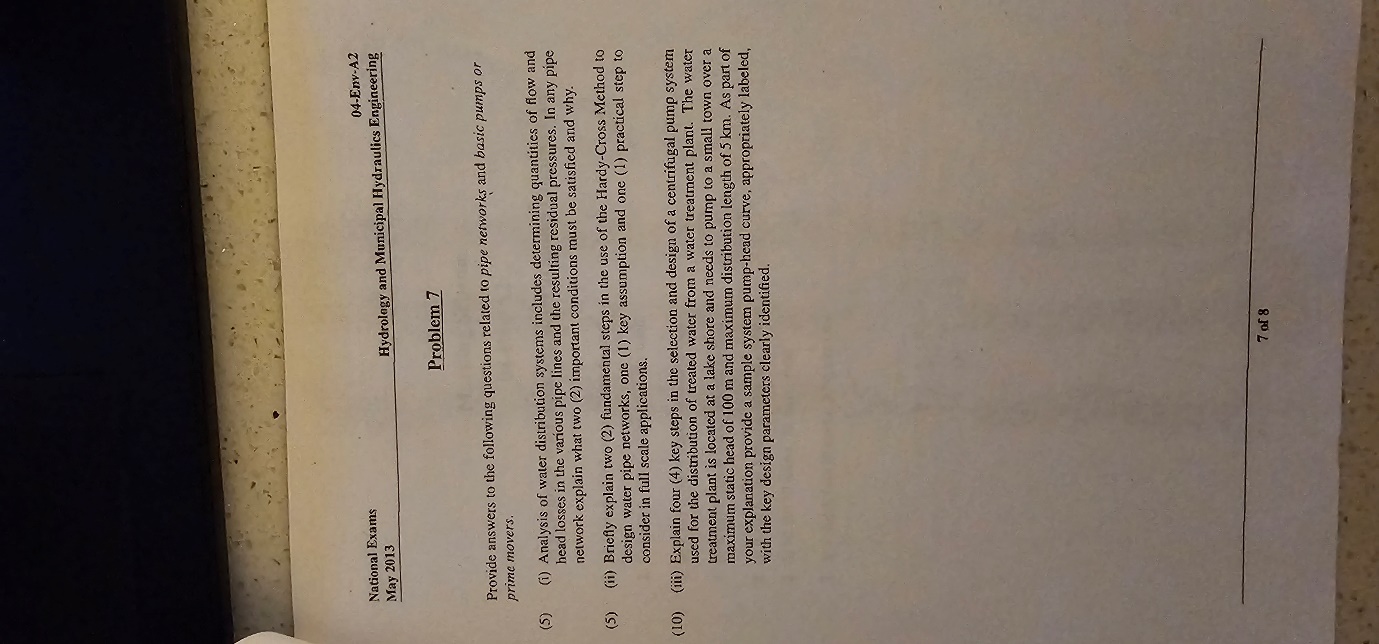Hardy-Cross Method for Pipe Networks Homework Answers Needed
Your Question:
National Exams May 2013
Hydrology and Municipal Hydraulics Engineering
(ii) Briefly explain two (2) fundamental steps in the use of the Hardy-Cross Method to design water pipe networks, one (1) key assumption and one (1) practical step to consider in full scale applications.
(10) (
Step By Step Answers with Explanation
Kirchhoff's Law: The sum of the head losses around any closed loop in the network must equal zero.
These conditions ensure that the network is hydraulically balanced and that water flows smoothly through the pipes.
The key assumption of the Hardy-Cross Method is that the head losses in the network are linear with flow rate. This assumption is valid for most practical applications.
A practical step to consider in full-scale applications is to use the Hardy-Cross Method to calculate the flow rates and head losses at multiple operating conditions. This will help to ensure that the network is hydraulically balanced under all operating conditions.
Calculate the system head loss: The system head loss is the sum of the head losses in the pipes and fittings in the distribution system.
Select a pump: The pump should be selected so that its operating point is on or near the best efficiency point (BEP) of its pump curve.
60
40
0.02
0.03
Shutoff head: The shutoff head is the maximum head that the pump can produce.
Net positive suction head (NPSH) required: The NPSH required is the minimum pressure that must be maintained at the pump inlet to prevent cavitation.






